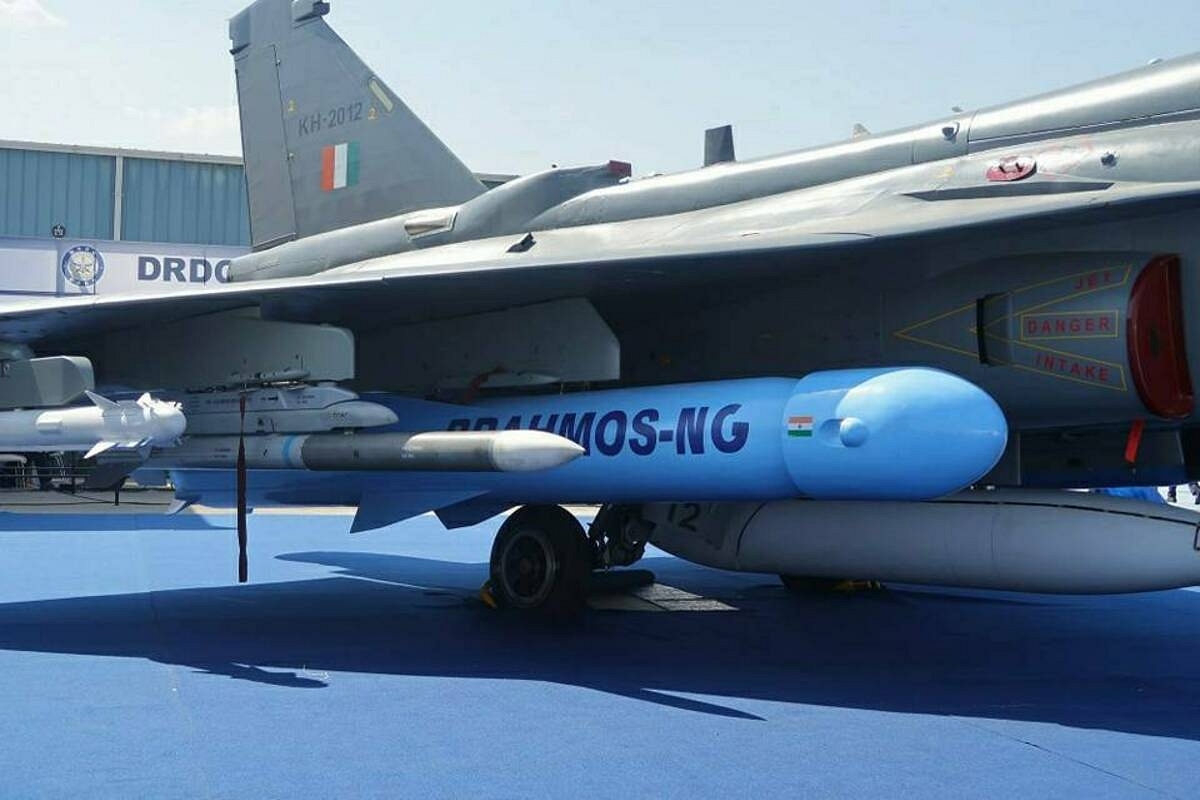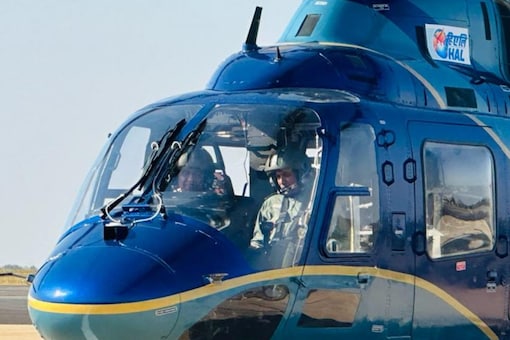SOURCE: IDRW.ORG TEAM.


Indian drone startup, Arka Aerospace Pvt. Ltd., has taken a significant leap forward by winning the prestigious r iDEX Indian Airforce Open Challenge 8.0. Their winning design – an All Purpose Multi-role Autonomous UAV (Unmanned Aerial Vehicle) – is set to revolutionize air defense capabilities for the Indian Air Force (IAF).
The iDEX Open Challenge aimed to identify and support innovative solutions for the IAF’s specific needs. Arka Aerospace rose to the challenge with their vision for a versatile drone capable of handling diverse tasks within air defense units and bases.
Continue readingSOURCE: RAUNAK KUNDE / NEWS BEAT / IDRW.ORG


Philippine Aerospace Development Corp (PADC) has initiated a significant strategic partnership with the renowned Indian aerospace giant Hindustan Aeronautics Ltd (HAL). The collaboration aims to introduce the advanced Tejas Mk1A aircraft to the Philippines, specifically designed to serve as a potent naval strike platform integrated with the formidable Brahmos NG missile system.
This groundbreaking alliance represents a pivotal moment in the defense capabilities of the Philippines, as it seeks to enhance its aerial prowess and maritime security. HAL’s willingness to engage in a partnership for the local assembly of the Tejas aircraft by PADC underscores the mutual trust and confidence between the two nations in addressing defense requirements.
Continue readingSOURCE: RAUNAK KUNDE / NEWS BEAT / IDRW.ORG


India’s Advanced Weapons and Equipment India Limited (AWEIL) has confidently entered the competition for the Indian Army’s Towed Gun System (TGS) program, claiming its upgraded Dhanush 155 mm/52 calibre towed howitzer surpasses all requirements and offers superior capabilities.
AWEIL officials also confirmed idrw.org that the Gun has completed proof firing and Internal testing and is ready for User demonstrations. when asked if the company could be able to compete in price since the Dhanush 155mmX45 Calibre Gun had a price of 14.50 unit while Certain Israeli companies have quoted 11 crores for their 52 calibres towed howitzer gun under the Make in India initiative, officials said that they can’t comment on Per unit cost but it will be considerable lower since initial orders are for 400 units.
Continue readingSOURCE: RAUNAK KUNDE / NEWS BEAT / IDRW.ORG


Tata Advanced Systems Limited (TASL) has achieved a remarkable milestone by developing India’s premier military-grade spy satellite, crafted entirely by the domestic private sector. This cutting-edge satellite is now primed for launch, having been prepared for deployment aboard a SpaceX rocket. With its unparalleled capabilities, the satellite boasts a spatial resolution of 0.5 meters, enabling precise and detailed imagery acquisition.
The creation of this groundbreaking satellite was made possible through a collaborative effort with Satellogic, a prominent Latin American company specializing in satellite technology. This partnership underscores India’s commitment to leveraging global expertise while promoting indigenous innovation in the field of space exploration and surveillance.
Continue readingSOURCE: IDRW.ORG TEAM.


The Defence Research and Development Organisation (DRDO) is set to receive orders for limited-scale production of its indigenously developed Nirbhay cruise missile, marking a significant milestone in India’s missile program. This comes after successful tests of the Manik engine, a locally developed turbofan engine designed specifically for the Nirbhay.
Previously, the Nirbhay relied on the Russian-supplied NPO Saturn 36MT engine, limiting its self-reliance. However, the Manik engine’s successful testing paves the way for a more independent and potentially more cost-effective missile system.
Continue readingSOURCE: IDRW.ORG TEAM


In a remarkable achievement, Mazagon Dock Shipbuilders Limited (MDL), a prominent player in India’s shipbuilding industry, has been granted a patent by the Indian Patent Office for pioneering a novel procedure in the final alignment of the Propeller Shaft on a Destroyer Class Vessel while in Dry Dock. This groundbreaking innovation not only underscores MDL’s commitment to excellence but also highlights the ingenuity of the shipyard’s own engineers.
The patented procedure represents a significant leap forward in the domain of shipbuilding, particularly in the critical aspect of aligning the Propeller Shaft. This innovation is pivotal for the proper functioning and performance of naval vessels, especially Destroyer Class vessels known for their agility and firepower. The traditional methods of aligning the Propeller Shaft often involve complex processes, but MDL’s engineers have successfully introduced a streamlined and efficient approach.
Continue readingSOURCE: RAUNAK KUNDE / NEWS BEAT / IDRW.ORG


A decade after the ambitious project began, the Indian Air Force (IAF) is nearing the finish line in its Mirage 2000 upgrade program. The final upgraded aircraft is expected to be delivered by the end of this year, marking the completion of a project beset by delays and challenges.
In 2011, India signed a $2.5 billion contract with Dassault Aviation to upgrade 51 of its Mirage 2000 fighter jets. This comprehensive upgrade aimed to bolster the aircraft’s capabilities with new avionics, radars, communication systems, and more. Originally slated for completion in 2021, the project faced several setbacks.
Continue readingSOURCE: RAUNAK KUNDE / NEWS BEAT / IDRW.ORG

Greek Armed Forces are considering a potential upgrade for their RM-70 multiple rocket launchers, and Indian company Munitions India Limited (MIL) is in the running with a proposal to bring them up to the Pinaka standard.
The RM-70, a Czechoslovakian variant of the BM-21 Grad, has been a mainstay of the Greek military for decades. This powerful area-saturation rocket system packs a punch, but its capabilities can be further enhanced. It is not clear what Pinaka standard was mentioned in Greek media since BM-21 Grad is a 122mm Rocket and Pinaka is a 214 mm Rocket.
Continue readingSOURCE: RAUNAK KUNDE / NEWS BEAT / IDRW.ORG


The Indian Air Force’s (IAF) indigenously developed SAMAR air defence system grabbed attention during Exercise Vayushakti 24 with its distinct launch profile. This short-range system, designed to counter low-flying aerial threats like fighter jets, helicopters, and UAVs, exhibited several unique features during the exercise.
One of the most striking aspects of the SAMAR launch was its initial flat trajectory, mirroring the launch profile of an air-to-air missile fired from an aircraft. This is due to the system’s use of repurposed Vympel R-73E infrared-guided air-to-air missiles (AAMs) that retain their “off-boresight” capability. This means the missiles can be launched at targets not directly in front of the launcher, offering greater flexibility in engagement scenarios.
Continue readingSOURCE: IDRW.ORG TEAM.


Hindustan Aeronautics Limited (HAL) is setting its sights on the burgeoning Indian civil helicopter market with its Light Utility Helicopter (LUH). C.B. Ananthakrishnan, Chairman and Managing Director of HAL, confirmed the company’s efforts to secure civil certification for the LUH within the next three to four years.
This ambitious goal is being pursued alongside the ongoing military certification process. HAL is actively engaging with the Directorate General of Civil Aviation (DGCA), India’s civil aviation regulator, to ensure smooth progress towards dual certification.
Continue readingSOURCE: IDRW.ORG TEAM.


The Indian Navy has taken a cautious approach to unmanned aerial systems (UAS) acquisition, recently inducting two Elbit Systems Hermes 900 StarLiner units for extensive evaluation before committing to further purchases. These drones, assembled locally in Hyderabad, represent a significant milestone in India’s quest for indigenous drone technology.
The two Hermes 900 units were assembled in Hyderabad by Adani Defence and Aerospace, marking a significant step towards India’s “Make in India” initiative. However, the Navy is not rushing into further purchases based solely on this fact.
Continue readingSOURCE: RAUNAK KUNDE / NEWS BEAT / IDRW.ORG


The production of India’s indigenously developed Light Combat Aircraft (LCA) Tejas Mk1A might face a slowdown next year due to delays in the delivery of its engines, according to media reports. This news emerges amidst the IAF’s recent interest in acquiring additional Mk1A variants.
The General Electric (GE) F-404 engines, powering the Tejas Mk1A, were initially scheduled for delivery from August 2023 onwards. However, GE reports supply chain challenges as the reason for the delay and subsequent production stoppage. They assure that the issues have been resolved and deliveries will begin this year.
Continue readingSOURCE: RAUNAK KUNDE / NEWS BEAT / IDRW.ORG


The fate of India’s ambitious Advanced Medium Combat Aircraft (AMCA) program hangs in the balance as it awaits clearance from the Cabinet Committee on Security (CCS) for a staggering ?15,000 crore budget. While the program aims for complete indigenous development, the question of how to involve the private sector remains a key point of contention.
Initial plans for a private-sector consortium to collaborate on the AMCA program seem to have hit a snag. Many Indian aerospace companies expressed reluctance due to factors like lack of experience, high investment with uncertain returns, and the complexity of managing multiple stakeholders.
Continue readingSOURCE: RAUNAK KUNDE / NEWS BEAT / IDRW.ORG


The Indian Army has set its sights on significantly bolstering its artillery capabilities with plans to procure not just the initially proposed 400 towed gun systems (TGS), but another staggering 800 units. These TGSs will become the backbone of the army’s towed howitzer regiments, offering crucial firepower across diverse terrains and conditions.
This procurement comes alongside the planned acquisition of 307 heavier, 18-ton Advanced Towed Artillery Gun System (ATAGS) units. However, the TGS, weighing below 15 tons, will offer greater operational flexibility, enabling deployment in India’s varied topographical landscapes.
Continue readingSOURCE: IDRW.ORG


India has ramped up its defense export push to the Philippines, offering local manufacturing of attack helicopters, artillery guns, and bulletproof vests during recent talks. This comes after India secured an order for BrahMos supersonic cruise missiles and offered its LCA-Tejas fighter jets and ALH-Dhruv helicopters. To incentivize the deal, India has also offered a soft loan with a low interest rate and a long repayment period.
This move highlights India’s growing ambitions in the defense export market and its efforts to forge closer military ties with the Philippines.
Continue reading